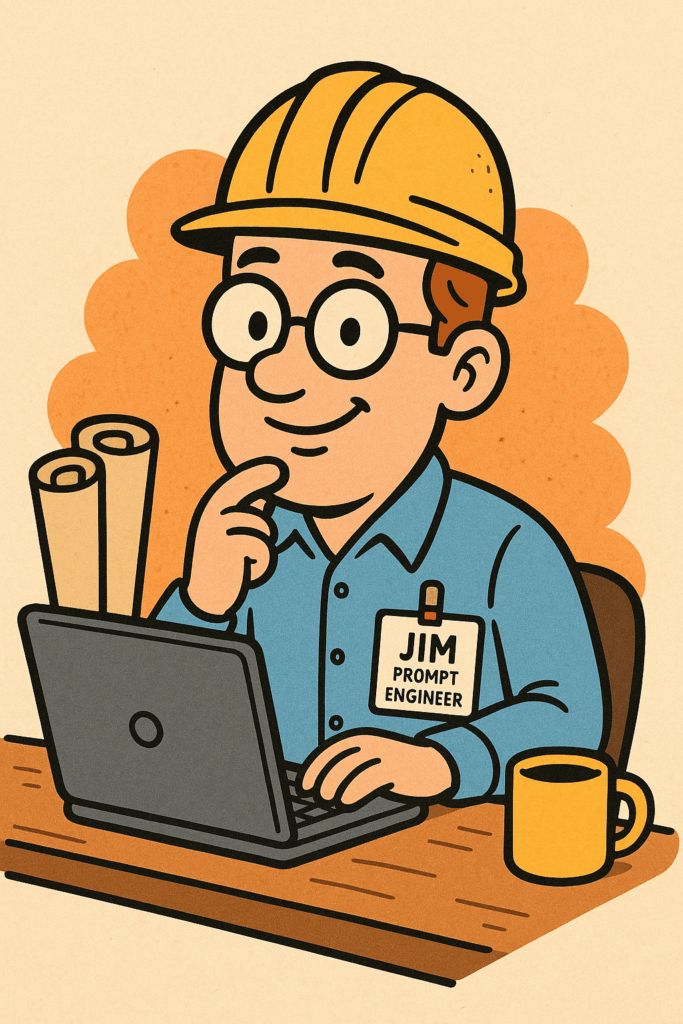I. Introduction
Every article I publish on this blog wrestles with some version of the same tension: How do we, as lawyers, creators, and technologists, make sense of generative AI’s disruptive force while staying anchored to principles of intellectual property and ethical responsibility?
It’s easy to issue critiques from the outside—to dissect the legal, commercial, and moral failures of the major AI providers as they consume vast stores of human creativity to train their models without authorization. And believe me, I’ve done plenty of that over the course of this AI & Copyrights series of articles.1
But here’s the uncomfortable truth I’ve had to confront:
- What level of contribution is necessary and sufficient to make an AI-assisted article “mine,” without crossing into plagiarism?
- And what about the legal and moral rights of the authors whose works were used—almost always without consent—to train the models I now rely on? Don’t they deserve acknowledgment? Maybe even a share of any proceeds?
These aren’t just theoretical questions. They strike at the heart of my own practice as a lawyer and a writer grappling with the tools of the very technology I critique.
“Use AI or perish” isn’t just the future—it’s arguably the present, across a wide array of fields. Sooner or later, we all have to look inward. What happens when the critic becomes the user, when this lawyer starts relying on the very tools he warns others to approach with caution?
The legal frameworks we have were never built with this type of human-machine interplay in mind—and that’s where the law, ethics, and practice begin to collide.
II. Do As I Say, Don’t Do As I Do…?
I just posted this past month my 3-part series criticizing the AI providers’ systematic misappropriation of creators’ works and distinctive styles to train their models without consent or compensation. And yet, earlier this year, I crossed a line of my own: I began using the very generative AI chatbots developed by the same to assist my own blog article writing.
There is simply no going back.

Why? And how can I reconcile all of this? To answer, we must first unpack what it means to write as both creator and prompt engineer, and how the GenAI tools I use influence not just the words, but also the images, ideas, and legal commentary I present.
A. My Transition to AI-Assisted Writing
I held out a long time.
I watched the explosion of generative AI tools with a mix of fascination, skepticism, and, frankly, resistance. As someone steeped in the intellectual property world, I was deeply aware of the unresolved legal and ethical questions. I told myself that if I was going to write about these issues, I needed to keep doing it the “right way”—through careful research, thoughtful drafting, and long, often painful, revision cycles.
I spent the better part of last summer and beyond coauthoring an extensive paper with a former Federal Circuit judge. It was one of the highlights of my entire legal career. I learned more over the course of that collaboration than I had doing anything else in my professional life. Together, we made a meaningful contribution to the field—one I remain deeply proud of.
But I would never do that again. Not using the same time-intensive process that dominated my life for months. Not without AI in the loop.
[cont’d ↗]

Wait a minute…That doesn’t look like me at all…


Self-schedule a free 20-min. video or phone consult with Jim W. Ko of Ko IP and AI Law PLLC here.
B. My AI-Assisted Writing Process: Part Creator, Part Prompt Engineer
My first real foray into generative AI-assisted writing began with my Parsing the Blame for AI series at the turn of this year. What started as a cautious experiment—using GenAI tools to draft outlines, test framing, and accelerate early drafts—quickly evolved into something more transformative.
Rather soon after I started, the hard lesson and simple reality hit me: I’m not as good a writer as I thought I was. And I most certainly am not—and never was—an efficient writer. I defy anyone who has seriously experimented with AI-assisted writing to tell me they haven’t come to a similar realization about themselves.
This wasn’t just tinkering with a new gadget; it was a fundamental reshaping of my entire writing process.
Generative AI tools now play a central role in crafting my blog content. I have developed and use an AI tool that is trained on all of my extensive publications and blog articles. What once took me weeks can now often be compressed into a few focused days. And the end result is unequivocally better, in terms of both form and substance.
Hmm. I thought I was a good writer….
But make no mistake. While the process is expedited, the end product is still mine. I’m the one framing the topic, setting the narrative arc, integrating prior scholarship, shaping the voice, and ensuring alignment with both the legal nuances and my perspective. Yes, AI helps generate drafts, but the original ideas are mine. Every iteration is guided by my subject-matter expertise. I work with AI to generate substantive options to choose from and refine.
I further serve as the critical check against AI’s well-known weaknesses: I mitigate hallucinations, I catch logical inconsistencies—both internal contradictions and external misalignments with legal standards—and I prompt the AI to course-correct with regularity.
AI’s true strength is taking care of summaries and transitions far better than I could ever dream of and instantaneously, allowing me to focus far more of my attention on the substantive development and framing of my positions.
C. “My” Images: All Prompt Engineer
It’s a different story for the graphic images in my blog. They are all generated using GenAI tools. Unlike the text, where my human authorship is layered into every stage, the images are fully machine-rendered.
Yes, I exercise some human judgment: I choose the style, tweak the prompts, discard irrelevant outputs, and deploy the final selections. But these images arise from a process where my role is more selector and director than creator.
I have sometimes spent upwards of an hour prompting the generation of a single image for an article. That’s not an overwhelming amount of time, but it’s certainly not de minimis. It’s enough to say I’m invested in the outcome. Yet I would never, under current law or ethics, sue anyone for copyright infringement simply for copying one of the images off my site.2
That said, if someone were to lift the entirety of one of my articles—text, images, commentary—and pass it off wholesale as their own? I mark each of my blog articles—including this one—with my copyright notice, both for legal effect and with pride. I would not hesitate to demand the copier to take down their posting or sue for copyright infringement. As I will present next week in Part 2, I have sorted out my own framework for evaluating these emerging issues, even if the law has not yet caught up.
© 2025 Ko IP & AI Law PLLC
In Part 2, we’ll tackle the legal and ethical heart of the matter: who owns an AI-assisted work, what happens when someone copies it, and why the real battles over authorship and value are only just beginning.
- For Part 1: Reasonable Expectation of Copyright: The Fourth Amendment Evolved With Tech. Copyright Should Too, click here.
For Part 2: Not Fair Use: Transformative Use Ends Where Generative AI Begins, click here.
For Part 3: Beyond the Single Work: Rethinking Fair Use’s Market Harm Test for the Creator Economy in the AI Age, click here. ↩︎ - While I don’t claim that level of artistry for myself, I believe there’s a real, unresolved question here: at what point does prompt engineering cross over into genuine creative authorship for visual arts, music, etc.? My view is the U.S. Copyright Office’s current Guidance is an excellent start for this determination, but we have a long way to go in developing a suitable standard. See U.S. Copyright Office, Registration Guidance: Works Containing Material Generated by Artificial Intelligence, 88 Fed. Reg. 16,190 (Mar. 16, 2023), and U.S. Copyright Office, Copyright and Artificial Intelligence—Part 2: Copyrightability, at (Jan. 2025), available here. For full discussion, see Jim W. Ko & Hon. Paul R. Michel, Testing the Limits of the IP Legal Regimes: Unique Challenges of Artificial Intelligence, 25 Sedona Conf. J. 389, 438–40 (August 2024) (discussing the unprecedented challenges for copyright applicants for meeting the U.S. Copyright Office’s disclosure requirements for AI-assisted works of authorship), available here. ↩︎

Leave a Reply